In the fall of 2015, I was the solitary member of my own “Wander Society” in Victoria where I spent five weeks for radiation treatments at the BC Cancer Agency. I discovered places I hadn’t seen before, took photos of unusual objects (like a new shoe hanging from a telephone pole), and took rests along the way to write in my journal. (I wrote about those “lost and found” objects in an earlier blog.)
Appreciating those leisurely, non-goal-oriented days, I was attracted to Keri Smith’s new book, The Wander Society (Penguin, 2016). In fact the word “wander” was one I chose for myself for this year: physically wandering as well as in the mind. Here’s my ancrostic poem for the word “wander”:
W onder
A ttuned
N ot attached to
D ecisions
E xcited to
R oam.
Writer and artist Keri Smith didn’t believe in promotion and perhaps she still doesn’t. Keri and I used to live in Ontario in different towns not too far from one another and now she lives in New England and I’m in Nanaimo, on Vancouver Island. At an open house she had as part of an artists’ studio tour in the Flesherton, Ontario area, Keri had hand-outs with her whimsical drawings. One of them was directions for creating a little matchbox size altar.
That’s how Keri “promoted” herself; by doing what she loved to do. She said way back in 2003: “Our culture focuses way too much on ‘how to make money,’ instead of ‘how to live well.’ I really feel that if you trust in your vision and pursue that which moves you, the work will come to you.”
Keri Smith has written lots of books that engage her readers in making things or filling in the blanks and I wanted to see what she was up to lately. It appears she’s still having fun and while she ends up with a product, a book, she seems very much into living well. And now, she has embraced the philosophy of The Wander Society which is: “wandering is a state of mind as well as a physical act.”
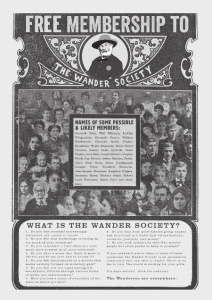 Keri writes in the introduction to The Wander Society that she found a worn hardback copy of Leaves of Grass by Walt Whitman in a dusty old bookshop. On the inside cover was written “WW will show you the way.” On the title page was scribbled: Solvitur Ambulando (“It is solved by walking).” Underneath those words, “The Wander Society,” was handwritten along with a small thunderbolt symbol.
Keri writes in the introduction to The Wander Society that she found a worn hardback copy of Leaves of Grass by Walt Whitman in a dusty old bookshop. On the inside cover was written “WW will show you the way.” On the title page was scribbled: Solvitur Ambulando (“It is solved by walking).” Underneath those words, “The Wander Society,” was handwritten along with a small thunderbolt symbol.
Keri became hooked on Whitman and Leaves of Grass which gave her access to “another plane of consciousness.”
Over the course of a year, Keri continued to find clues to The Wander Society, collecting pamphlets and “Mini Zines” as well as images of Whitman, in the New England town in which she lives. She also checked online and found a website with a white thunderbolt in the middle of the page. I tried the same and found the various symbols of The Wander Society all clickable and leading to all sorts of information included in the book.
While it all may have started for her with Walt Whitman’s book, Keri has now engaged readers in the mystery. I’m now tempted to join in the magic by leaving quotes and clues around my own city. In fact, that’s what the book is all about. There are some stickers included in the back. I think I’ll make up my own notes, stickers attached, and leave them around town. I can even include a phone number as there is one in the book for The Wander Society. I called it and you’re welcome to become a member or leave a suggestion. All very secretive and very clever.
Professor J. Tindlebaum, who wrote the foreword, has a website and there is not much there. His first book, Creating Freedom: The Ethics and Aesthetics of Self-Organization, is to be published by Penguin in 2016. Isn’t that co-incidental? The same publisher as The Wander Society and the same year.
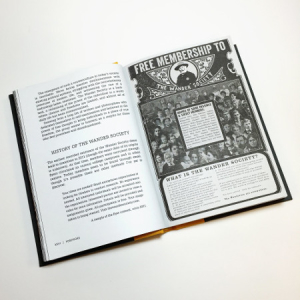 Although The Wander Society dates back to only 2011, the book has an old-world feel with its black and white, vintage illustrations. And one of the greatest influences of the society is Walt Whitman who lived from 1819 to 1892. “His prose was the result of his daily roaming around the streets of New York City,” Keri points out.
Although The Wander Society dates back to only 2011, the book has an old-world feel with its black and white, vintage illustrations. And one of the greatest influences of the society is Walt Whitman who lived from 1819 to 1892. “His prose was the result of his daily roaming around the streets of New York City,” Keri points out.
A typewritten letter says: “The path of the wanderer is an experiment with the unknown. To be idle, to play, to day dream.”
There’s “a kind of manifesto” entitled “The Wandering Precepts” and Keri’s handwritten comments at the bottom of such pages.
Here are the precepts:
Wander every day.
Do not plan your wanderings. Start in any direction. The location is not important.
Use whatever you have. (You have everything you need.) Use your senses.
Collect and gather. Document experiences and findings.
Remain open. Breathe deeply. Ask the question, “What can I discover?”
Allow ideas to come in. Write them down.
Question everything you have been told.
Use your imagination in your wanderings.
Use your intuition. Follow hunches. Go toward what you are drawn to.
Encourage your wild nature. What makes you feel truly alive?
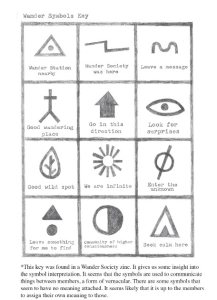 What fun Keri Smith must have had discovering this new way of being and creating tools such as a “cardboard wander station,” where pamphlets can be left for others to find. The book includes directions for a “Wander Badge,” a “Wandering Notebook” and other wandering tools in the “How-To Section.” Keri loves to have people make things.
What fun Keri Smith must have had discovering this new way of being and creating tools such as a “cardboard wander station,” where pamphlets can be left for others to find. The book includes directions for a “Wander Badge,” a “Wandering Notebook” and other wandering tools in the “How-To Section.” Keri loves to have people make things.
“The Wander Society conducts all of its operations in a covert fashion,” which helps to explain the approach taken with the book. Wanderers limit the use of technology while “out on wanderings” but cameras are okay to document what you see.
While some may be concerned about the future of books, Keri Smith has taken the book to a whole new and exciting level. As a self-described introvert, she is glad not to have to interact with other people yet she can participate in a group activity. She has created the perfect way to do it.
Here are a few tips from “The Philosophy of Wandering”:
To wander is to enter into a space of existing solely in the present moment.
To wander is to leave behind the complications of living.
To wander is to wake up as if from a deep sleep.
To wander is to peer through a secret portal to another plane of existence.





















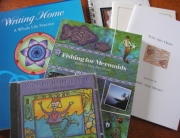

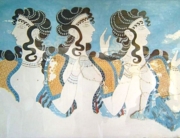

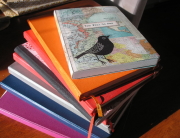
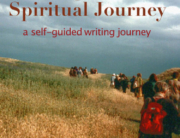






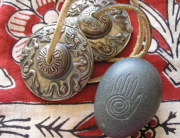


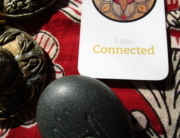








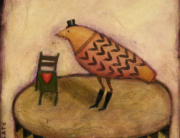















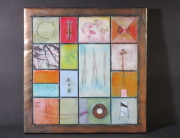
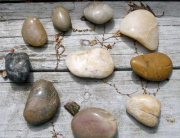













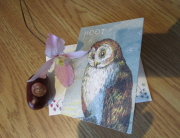


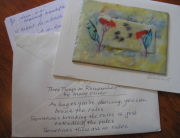
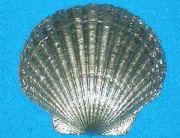

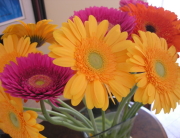

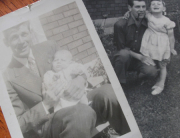







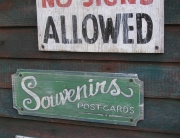













I am reminded a song we sung at camp when I was young and again when I workef at children’s summer camp. It was entitled.”The Happy Waunderer”. I have declared for myself this summer “the days of wonder and waundering” Once again we are both engaging in what our heart is telling we need right. Looking forward yo meeting you along the way. Happy waundering Mary Ann.
So that’s what I’ve been doing. I love my wandering days. I usually end up in second-hand stores, books or otherwise and always find treasures and unpolished gems. It fills the soul to have open-ended wandering. Thanks for this post and Hello to fellow wanderers.
I found out about the Wander Society via a note in the back of my Reck This Journal
I was so excited to see your recent reply to Maryann,this means TWS is alive n well in 2018. I am extremely happy to happenstance accross keri’s book. I set out one day to find Hemingway’s newly released story,which I found n continued to wander around till Keri’s book s found me and the TWS book is the one I chose. Coincidental?I think not it’s EXACTLY what my soul craves,and joyously, “I’m in!” Happy ramblings to you fellow wanderer!
I just came across TWS at a little bookstore in Waynesville, NC. I’ve been reading it and researching the Society online ever since. 🙂
Your blog finds me in my own version of a “wander” as I take a month away from my daily work routine to acclimatize myself to living on Vancouver Island.
It’s a delight! Richard and I are wandering in the “feet on the ground” sense as well, as we’ve elected to give a car-free lifestyle a try. So far so good. We don’t mind busing (I grew up using TTC for the first 30 years of my life) and we like to walk.
It’s amazing what you see when walking that you don’t see while driving, and who you chat with when not behind a wheel.
We’re quite enjoying our own wandering society excursions. (We sure do sleep well, too!)
I love this idea of leaving random things or messages and it makes me want to get this book to find out more.
Loved this post, Mary Ann! But then I don’t know if you’ve penned a post I didn’t love!)
Found my copy in a bookstore the only copy, the title immediately caught me. I felt like I found a treasure as I paid for it. I waited till I could sit down & devoured it as a relished treat! Inspired by it’s conotation of self discovery & freedom, I quit my full time job for two part-time seasonal type jobs allowing me less stress & more freedom.
Solvitur ambulando!!
I noticed that there were a few fairly recent replies in the comments… I bought the book in 2016, lost it, and it turned up suddenly in a bin of old camp shirts. I’ve read through the book thoroughly and checked the website about a week ago… does anyone know the password? I applied and haven’t received anything….
Alex, I’m not sure why there are recent replies in the comments . . . perhaps check out Keri Smith’s website and see if you can learn more there. Or contact her possibly . . .